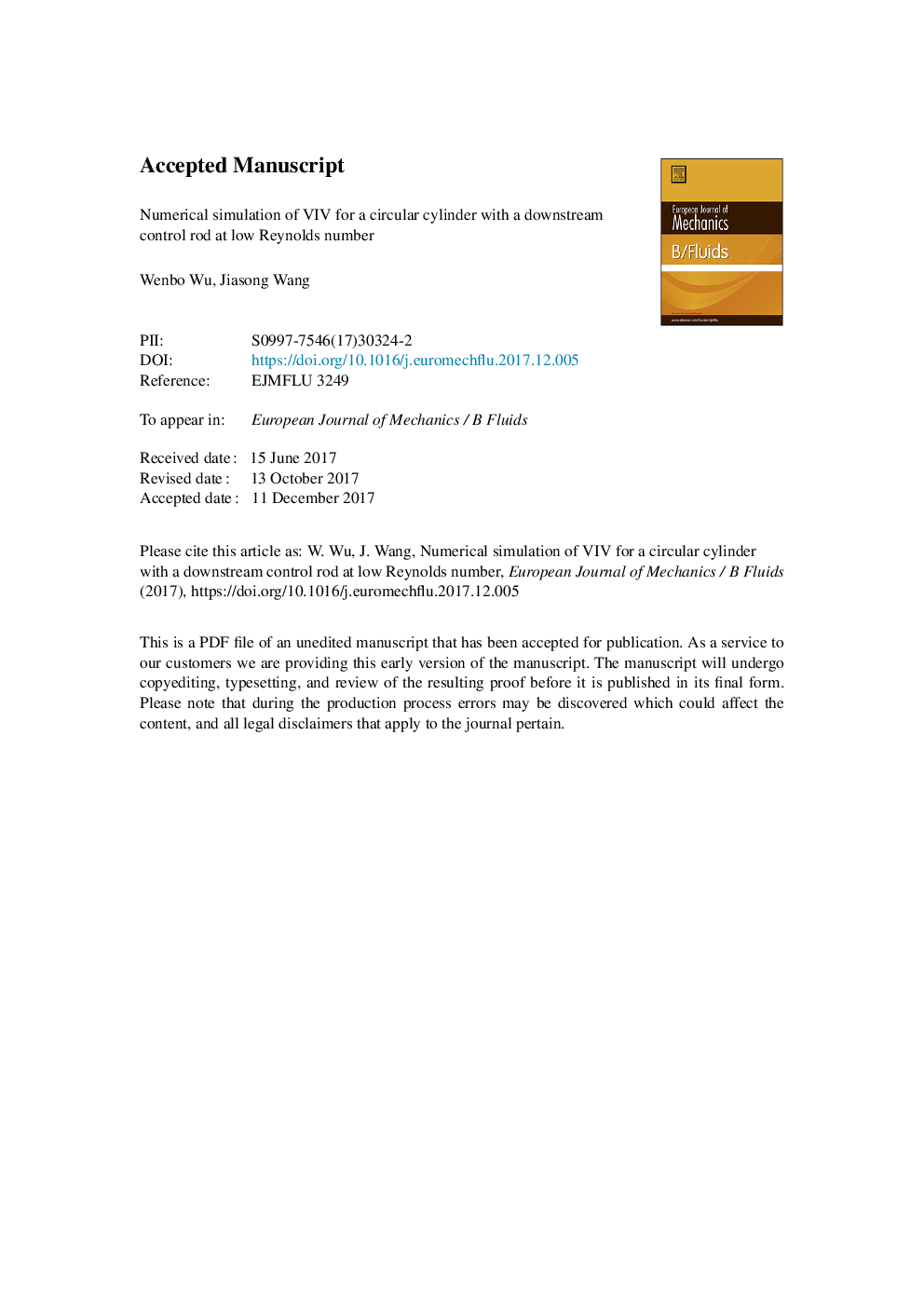| Article ID | Journal | Published Year | Pages | File Type |
|---|---|---|---|---|
| 7051074 | European Journal of Mechanics - B/Fluids | 2018 | 31 Pages |
Abstract
A numerical simulation of the vortex-induced vibration (VIV) at Reynolds number of 500 is carried out for a circular cylinder with a downstream rigidly connected control rod. The mass ratio (m*) and damping ratio (ξ) are fixed as 10 and 5Ã10â4. The fluid dynamics is obtained by solving arbitrary Lagrangian-Eulerian (ALE) Navier-Stokes equations, and the structure dynamics is solved using Newmark-β method. The grid convergence is tested using five different grids to select the proper mesh. The model and computational method are validated by comparing with the previous research, and a good agreement is reached. The VIV of the cylinder system at eight different gap ratios (GâD=0.01â¼2) are simulated. The responses of the cylinder system are discussed following the classification of the flow patterns at different gap ratios. The same VIV characteristic can be observed in the same flow pattern. The sub-harmonic resonance is observed in the VIV of the cylinder system for large reduced velocity as GâD<0.7. A simple formula is used to explain the sub-harmonic resonance. The vortex shedding mode and the frequency of the lift force on the cylinders in the lock-in regime are used to validate the formula. The smaller the gap ratio is, the more lock-in regimes can be excited, and the higher-order sub-harmonic resonance can be observed. The control rod has a great influence or even is decisive on the VIV of the cylinder system at small gap ratio. As the gap ratio increases, the effect of the control rod is becoming weak. Besides the natural frequency of the cylinder system, the frequency corresponding to the vortex shedding mode is observed in the lift coefficient of the cylinders.
Related Topics
Physical Sciences and Engineering
Chemical Engineering
Fluid Flow and Transfer Processes
Authors
Wenbo Wu, Jiasong Wang,
